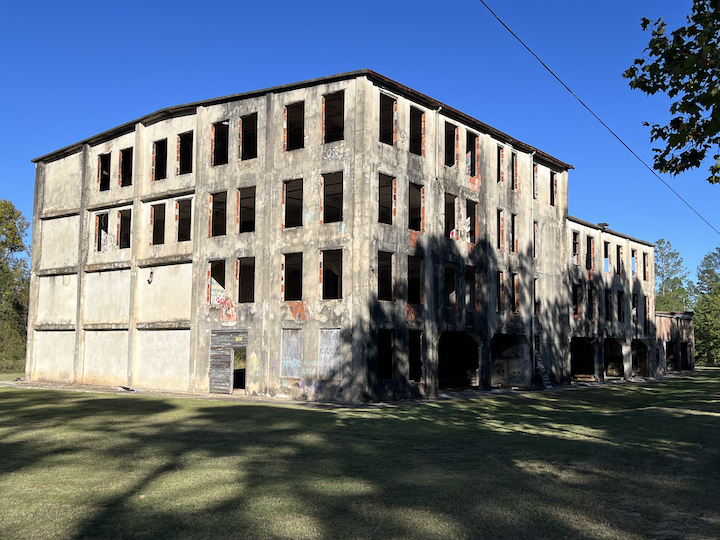Survival and Hope in the Student-Led Battle Against Sepsis
Georgia Southern University approved a new limited grade forgiveness policy that will begin Fall 2018.
April 11, 2017
In early 2016, 23-year-old Tory Pereira was hitting her stride. Having just graduated from Georgia Southern with a bachelor’s in psychology and a minor in sociology, the easygoing Marietta native was looking forward to a trade show in Las Vegas when she began to experience flu-like symptoms. While she began experiencing extreme dehydration, crippling pain, fever and nausea, it quickly became apparent that something much more serious was going on when she collapsed on the floor of a restaurant. Pereira soon fell into cardiac arrest where she lay. Her brain did not receive oxygen for eight minutes and her pulse fell flat. She did not know that this was just the beginning of her fight for her life.
“I just remember getting up that morning to leave for Las Vegas and being in such intense pain that I couldn’t hardly stand and I was very pale,” Pereira explained. “Then during the car ride I was absolutely burning up, keep in mind this was in January and it was freezing, so I had everyone roll down the windows and was just chugging water, but nothing helped.”
 After being taken to the emergency room and falling back into cardiac arrest the next morning, doctors were forced to do an exploratory surgery to figure out what they were up against. It wasn’t until after cutting her open from sternum to pelvis that the medical staff was able to see that she had a two-inch hole inside her duodenum, part of her small intestine. It was at this point that doctors finally realized she had been in septic shock. Pereira was given a less-than-one percent chance of survival.
After being taken to the emergency room and falling back into cardiac arrest the next morning, doctors were forced to do an exploratory surgery to figure out what they were up against. It wasn’t until after cutting her open from sternum to pelvis that the medical staff was able to see that she had a two-inch hole inside her duodenum, part of her small intestine. It was at this point that doctors finally realized she had been in septic shock. Pereira was given a less-than-one percent chance of survival.
The doctors performed a gastric bypass which rerouted her stomach to avoid any more food passing through her perforated duodenum; they did not expect her to eat a solid meal ever again. It took 30 staples to seal her stomach back together and she would remain in critical condition for the next 12 hours while in a medically-induced coma. Right when things couldn’t look any worse, her kidneys failed. After waiting an entire week for her heart rate to drop to a safe enough level to do dialysis, the first round was ineffective. Her lungs filled with fluid, had to be drained, and two more rounds of dialysis had to be performed until her condition finally began to improve. Against all odds, on February 11 of last year, Pereira woke up from her coma and began her long road to recovery.

Left to right: Will Dickman, Tory Pereira, Kevin Ulmer
Pereira’s story is just one of millions that shows the destructive and lethal capabilities of a sepsis (or septicemia) infection. She is lucky enough to be alive to share her experience and spread hope and awareness through her position as the president and co-founder of Sepsis Awareness United (SAU). Alongside Georgia Southern students and co-founders Will Dickman and Kevin Ulmer, her aim is to help stop the world’s leading killer-by-infection by bringing sepsis into the public eye.
When one hears the word “sepsis” it’s easy to think that it’s not even in the realm of possibility to affect you, but when SAU Treasurer Will Dickman heard what had happened to his friend, he knew they had to make a stand.
“One of the sweetest, most genuine girls I’d ever met was afflicted by this horrible infection and you never hear anything about it. We wanted to do something about that,” Dickman said. “We came together about six months after she got out of the hospital and started researching this infection and what we found out was honestly shocking.”
According to the Center for Disease Control, from 1999-2014 there were nearly 2.5 million deaths related to sepsis, nearly six percent of all total deaths during that period. Of the roughly one million Americans who become infected with sepsis each year, between 28 and 50 percent of those people die, with the numbers being much higher in countries where medical attention isn’t as readily available. Since sepsis is so complex to treat, the Agency for Healthcare Research and Quality lists sepsis as the most expensive condition treated in U.S. hospitals, costing more than $20 billion in 2011. With exorbitant medical expenses for patients and sepsis being the world’s leading cause of death via infection, somebody had to get the conversation started.
Symptoms Pereira experienced during her bout with sepsis are some of the tell-tale signs that the infection is manifesting. The Mayo Clinic says that symptoms may include, but are not limited to, having a body temperature above 101℉ or below 96.8℉, abdominal pain, difficulty breathing, abnormal heart rate, changes in mood, dizziness, chills, fatigue, and flushing or discoloration of the skin. There are many causes for the condition which include pneumonia and kidney, bloodstream, and abdominal infections. It is these symptoms and preexisting conditions that SAU wants people to keep an eye out for so that they too will not fall victim to this deadly infection.
To start the charity, a website and that’s where SAU Secretary Kevin Ulmer came in. An IT major who moonlights as the assistant varsity wrestling coach at Bulloch Academy, Ulmer got involved with the integration of the technology for the organization when he heard what Pereira went through. The site features a donation page with plans in the near-future to sell first-aid kits to help raise money and awareness. One of the more interesting endeavors the group plans to take on is selling aluminum-molded anthill castings made personally by Dickman.
“You know people walk by anthills everyday and don’t bat an eye, just like people aren’t stopping to pay attention to this widespread infection. Just like there are ants living on almost every surface of the world, so are people and where there are people there is sepsis,” Dickman explained. “It’s the things we take for granted that sometimes can have the most meaning.”
As the charity is still in its infancy, their primary focus right now is outreach. The organization has been reaching out to schools and local nursing homes so they can talk about the dangers of sepsis and how to prevent it alongside medical professionals. They also plan to give support to survivors around the world and let them know they are not alone. In the upcoming months, the group hopes to meet with Georgia Southern and members of the local community and organize an event to break the Guinness World Record for the largest first-aid kit training class, all in the name of getting people talking and more educated about sepsis.
If you want to donate to the cause or learn more about the prevention of sepsis you can go to http://sepsisunited.org/ or check out their Facebook page at https://www.facebook.com/pg/sepsisunited/about/. To hear more about Pereira’s story and her journey to recovery you can visit her website at www.torypereira.com.









